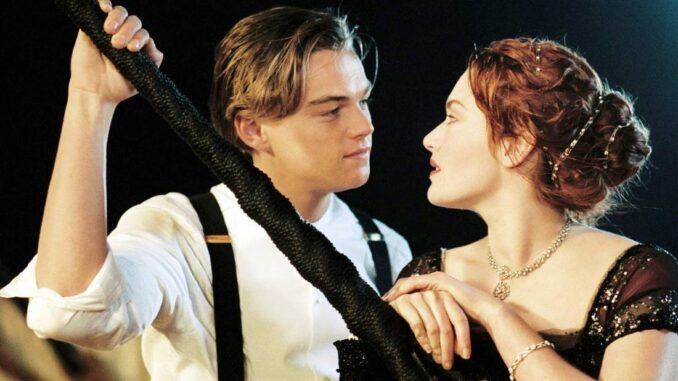
The Unsinkable Debate: Why James Cameron's Titanic Still Sparks Discussion Decades Later
Twenty-six years have passed since James Cameron's Titanic unfurled its epic tragedy and sweeping romance across cinema screens, captivating a generation and shattering box office records. A film of immense scale and undeniable emotional impact, it swept the Academy Awards, solidified Leonardo DiCaprio and Kate Winslet as global stars, and embedded itself deep within the cultural consciousness. Yet, despite its monumental success and the passage of time, the film remains an active, sometimes fervent, subject of debate. It’s not just a nostalgic rewatch; it’s a living, breathing cultural artifact that continues to prompt arguments, re-evaluations, and impassioned defenses, proving itself, in its own way, as unsinkable as the legend it portrays.
One primary engine of this enduring debate lies in the film’s audacious blend of meticulous historical recreation and a wholly fictional, albeit universally appealing, love story. Cameron famously spent millions on the production, commissioning detailed research into the actual ship, its passengers, and the mechanics of its sinking. From the precise china patterns to the layout of the engine rooms, the film presents an almost documentary-level fidelity to the physical details of the Titanic. Real historical figures, from the stoic Captain Smith to the courageous Molly Brown, are woven into the narrative. This commitment to historical verisimilitude creates an expectation of accuracy that then clashes with the film's central, fabricated romance between Jack Dawson, the penniless artist, and Rose DeWitt Bukater, the suffocated socialite. For purists and historians, the prominence of this fictional drama, no matter how engaging, can feel like a trivialization of a real-life tragedy, an overshadowing of the thousands of actual lives lost by a Hollywood fantasy. Conversely, defenders argue that the romance provides the emotional anchor, the human-scale narrative necessary to make the overwhelming historical disaster comprehensible and deeply felt by a mass audience. This inherent dichotomy – fact versus fiction, history versus melodrama – ensures a perpetual tug-of-war in critical and popular discourse.
Beyond the factual, the sheer technical ambition and artistic merit of Titanic also remain a contentious point. Upon its release, the film was a groundbreaking achievement in visual effects, seamlessly blending practical sets, miniatures, and nascent CGI to bring the colossal ship and its catastrophic demise to breathtaking life. The sinking sequence, in particular, remains a masterclass in tension, scale, and visceral terror. For many, this technical prowess elevates Titanic into the realm of true cinematic artistry, a spectacle that still impresses decades later. Yet, for others, the film's perceived emotional sentimentality and reliance on archetypal characters (the dashing hero, the damsel in distress, the mustache-twirling villain) prevent it from being a truly profound or challenging piece of cinema. Is it a triumph of spectacle that occasionally sacrifices nuance for broad appeal, or is the spectacle itself an integral component of its artistic genius, designed to immerse viewers in an overwhelming experience? The debate often boils down to whether one values the awe-inspiring visual journey over character depth and narrative innovation, or if one believes the film manages to achieve both.
But perhaps no single point of contention has burned brighter, or for longer, than the infamous "door" debate. The scene where Rose floats on a piece of wooden debris, saving herself while Jack succumbs to the icy waters, has been scrutinized, mocked, tested, and theorized over countless times. Could Jack have fit on the door with Rose? Could they have both survived? This seemingly trivial plot point has become a cultural touchstone, generating memes, scientific experiments, and even a direct response from James Cameron himself. The passion behind this particular debate illustrates a deeper engagement with the film – not just as a passive viewing experience, but as an interactive puzzle. Viewers become so invested in the characters and their fate that they demand logical consistency, even for the sake of a fictional romance. It highlights how films, particularly those that grip us so strongly, can transcend their initial artistic intent and become subjects of intense, personal, and sometimes humorous, interpretation.
Finally, the sheer cultural impact and enduring presence of Titanic contribute significantly to its ongoing discussion. For many, it was the cinematic event of their youth, a film that shaped their understanding of epic romance and historical drama. Its ubiquitous soundtrack, iconic lines, and unforgettable imagery are woven into the fabric of popular culture. This generational connection fosters a potent mix of nostalgia and critical re-evaluation. Those who adored it as children or teenagers may now, as adults, view it through a more critical lens, finding its melodrama heavy-handed or its historical liberties jarring. Conversely, new generations discovering the film often bring fresh perspectives, either marveling at its scale or dissecting its dated elements. The film's immense popularity ensures it's never truly relegated to the archives; it's constantly being rediscovered, re-examined, and thus, re-debated.
In conclusion, James Cameron's Titanic endures as a subject of debate not despite its success, but perhaps because of it. Its ambition to be both a historically rich disaster epic and a universally resonant love story creates an inherent tension. Its groundbreaking technical achievements provoke discussions on the nature of cinematic art. Specific, emotionally charged plot points like the "door" invite viewers into a shared, ongoing dialogue. And its overwhelming cultural footprint ensures that each new generation, each new perspective, will continue to stir the waters. Like the ill-fated ship itself, Titanic the film has proven remarkably resilient, navigating the currents of time and criticism, forever sparking conversations that keep its legend, and its controversies, alive.
